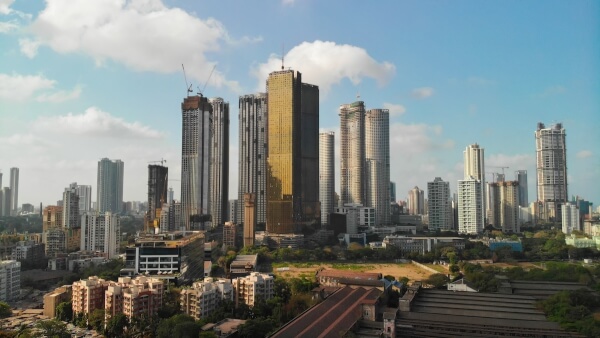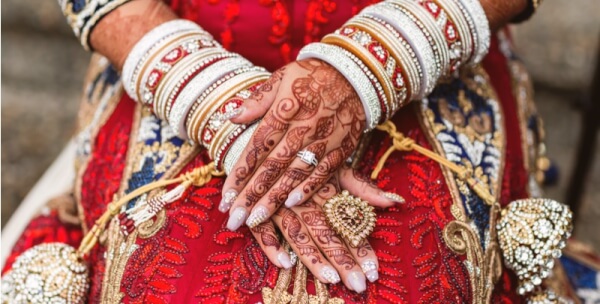Property taxes in India: Full guide for Americans
Want to learn about property taxes in India? This guide covers types of property taxes and how they are calculated to help you navigate the process.

With a population of more than 1.3 billion, it’s no surprise that India runs the largest national school system in the world. While it’s not often recognized for its quality, education in the south Asian country has been on the rise, and now places in the top half of U.S. News & World Report’s rankings of 80 countries for best in education.
With more than 700,000 schools in operation, India certainly has a big job on its hands. Despite the recent improvements in Indian school systems, many parents choose to educate their children in private institutions. In fact, just 70% of school age children attend public schools. That being said, only about 50% of Indian children go to school at all: while registration is compulsory, attendance isn’t typically enforced.
Whether you’re moving to India to start a business, find a new job or just for a fresh start, it’s important to understand how the school system works and how it will affect your family. This guide breaks down the stages of education in India, as well as the typical structure of the school year and the possibilities and costs of private school.
The education system in India is sometimes called a “10 + 2 + 3” system. This means that the first decade of a child’s education is mandatory, per the federal government. Most students begin their schooling at age five, in the form of preschool. By the time they're six, primary school begins. Students remain obligated to attend school until age 14, at which point they may choose to halt their education.
| School Type | Age |
|---|---|
| Pre-Primary | 5 |
| Lower Primary | 6-10 |
| Upper Primary | 11-13 |
| Secondary | 14-16 |
| Upper Secondary | 17-18 |
Pre-primary school isn’t mandatory for students in India, however, many parents choose to enroll their children anyway. Compulsory education does not begin until children are six, at which time they enter primary school.
While both private and public schools are available for primary school students, parents typically choose to send their children to public schools, which often have better facilities than private schools do.
Primary school is often taught in local dialect, of which there are 122 across the country. Many schools, however, choose to educate children in Hindi, which is the official language of India. English as a foreign language begins by the time students are in third grade, however, this is somewhat of a misnomer, as English is the second official language of India.
While exact curriculum changes from grade to grade and school to school, at this point students are usually introduced to math, science, history, physical education, art and the language arts.
Grading in primary school is as follows, and remains constant throughout the remainder of mandatory schooling:
| Grade Percentage | Description |
|---|---|
| 90+ | Excellent/ outstanding |
| 70-89 | First division |
| 50-69 | Second division |
| 40-49 | Pass |
| < 40 | Fail |
Secondary school in India starts in grade nine and continues through graduation from grade 12. Secondary school is made up of two-year cycles, typically called lower and upper secondary school. These stages are sometimes called “Standard X” and “Standard XII” instead.
Secondary school remains government funded and free to parents, though older children are more likely to attend private school than younger ones are. Students must take exams at the end of each cycle in order to move to the next one, or university education.
Typical curriculum in lower secondary school includes three language courses; the local dialect, English and one more elective language. Other classes include math, science, tech, social sciences, art and physical education.
Each secondary school is affiliated with a state board, which is responsible for issuing secondary school certificates to students who pass grade 10. Students who don’t pass grade 10 are held back until they’re able to achieve satisfactory marks.
Students are then required to attend upper secondary school, where they’ll be able to select their “stream” of study. Streams include science, commerce or the arts/humanities. Admission to these upper secondary schools can sometimes be rather competitive, and it’s important for students to have performed well academically throughout lower secondary school in order to ensure they’re able to attend the upper secondary school of their choice.
In order to graduate, students take (and pass) the Higher Secondary Certificate Examination, or HSCE. While the HSCE is the exam that’s most widely used, some regions may elect instead to offer students the All India Senior School Certificate, the Indian School Certificate, the Certificate of Vocational Education, the Senior Secondary Certification or the Intermediate Certificate.
The school term in many parts of India begins in April and runs until the following March, however, some areas follow a June-May or July-May system.
Students get a summer break within that gap, and also enjoy a two-week winter vacation in the middle of the year.
In Eastern and Southern states, students also get a 15-day break for Dasara in September/ October, and another one to two week break for Christmas in December.
While many parents choose to send their children to public school, especially in their younger years, expat families often choose to send their children to international schools instead.
This is advantageous as students apply to universities abroad, which tend to favor their national curriculum. It’s also helpful for children who have no prior knowledge of Hindi or their new regional dialect.
While this can seem ideal, it also comes with a cost. International schools range from 323,000-1,500,000 rupees per year, which is relatively expensive. Those fees also don’t cover uniforms and textbooks, the costs of which can seriously add up, or boarding, which may be necessary depending on the region in which you live.
Regardless of why you’re moving to India, you don’t need to worry about your family’s education while you’re there; there are many options in excellent schools throughout the country.
If you do choose international school and are funding your child’s education from your account back home, use Wise to get the real exchange rate and cut out expensive international bank transfer fees.
*Please see terms of use and product availability for your region or visit Wise fees and pricing for the most up to date pricing and fee information.
This publication is provided for general information purposes and does not constitute legal, tax or other professional advice from Wise Payments Limited or its subsidiaries and its affiliates, and it is not intended as a substitute for obtaining advice from a financial advisor or any other professional.
We make no representations, warranties or guarantees, whether expressed or implied, that the content in the publication is accurate, complete or up to date.

Want to learn about property taxes in India? This guide covers types of property taxes and how they are calculated to help you navigate the process.

A handy guide for understanding the job options in India for foreigners and expats.

India is an ethnically diverse and culturally vibrant country. If you’re thinking about moving to India you'll probably need to find a job, and with a large...

India is a country packed with opportunities - so if you live or work there, and plan to stay for the long term, then seeking Indian citizenship makes a lot...

Having a baby is one of the most exciting times of your life. But there are many aspects that can feel daunting, especially if you’re an expat living abroad....

Getting legally married in India isn’t a simple process. Between a lengthy wait time, nuanced legal customs and a plethora of details to consider. However,...